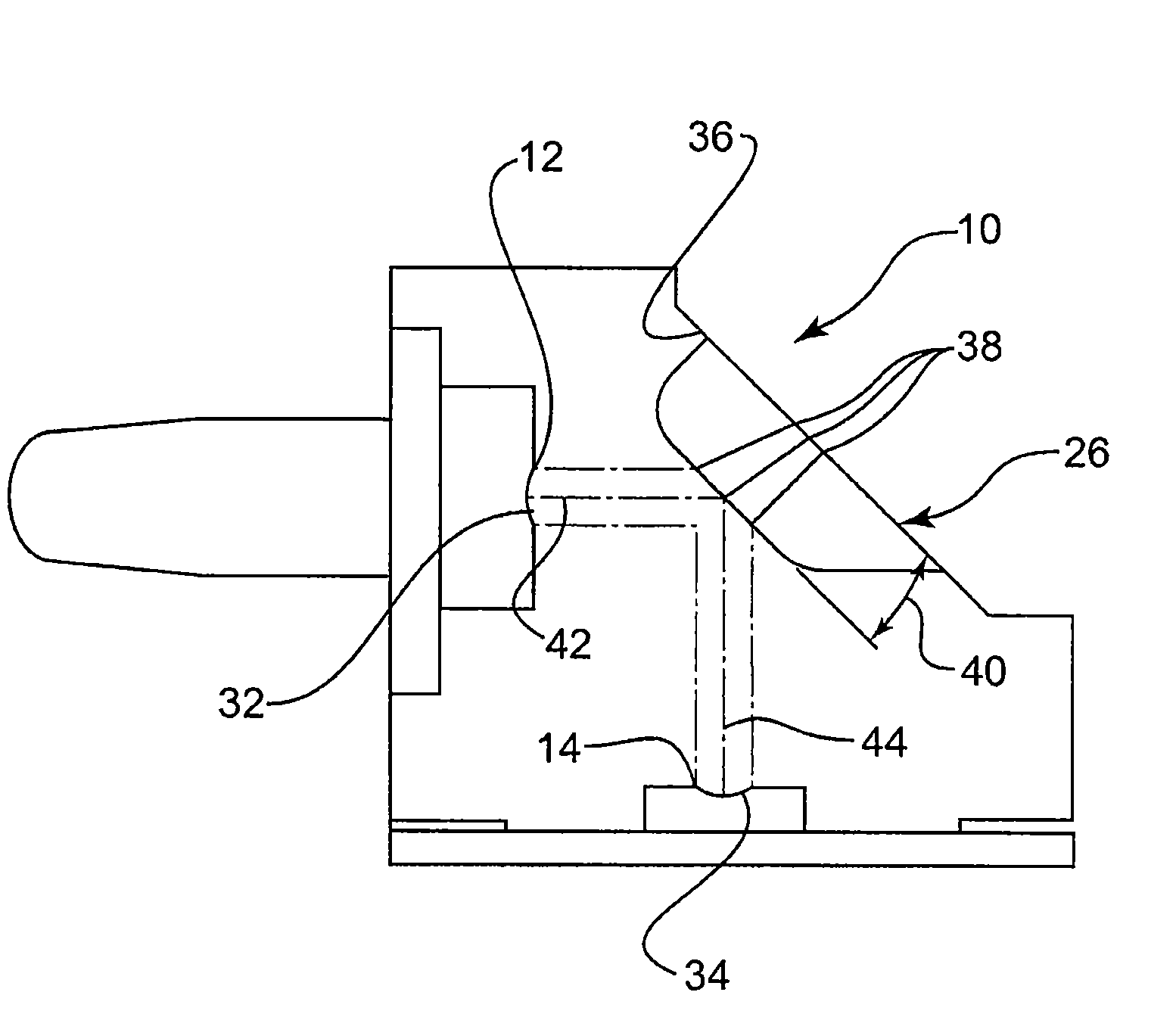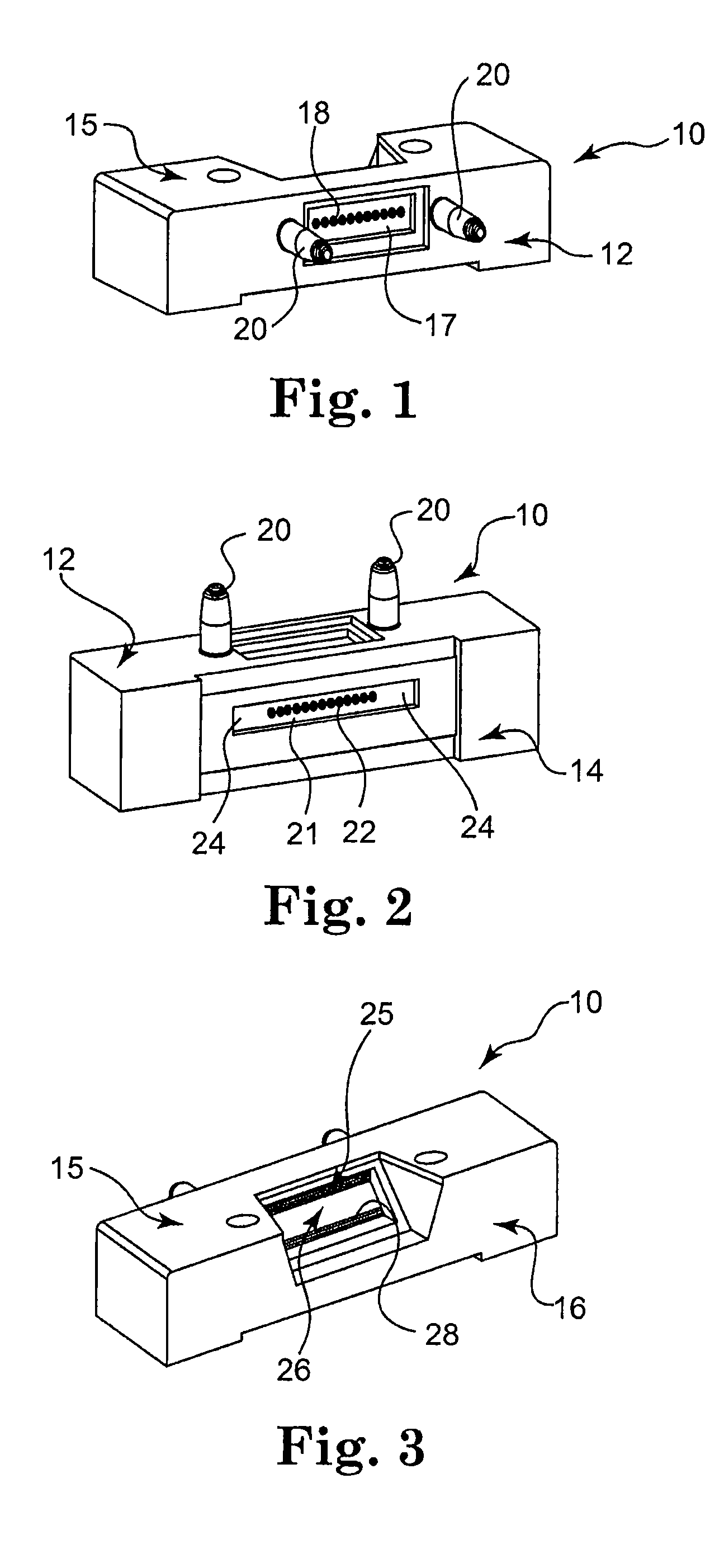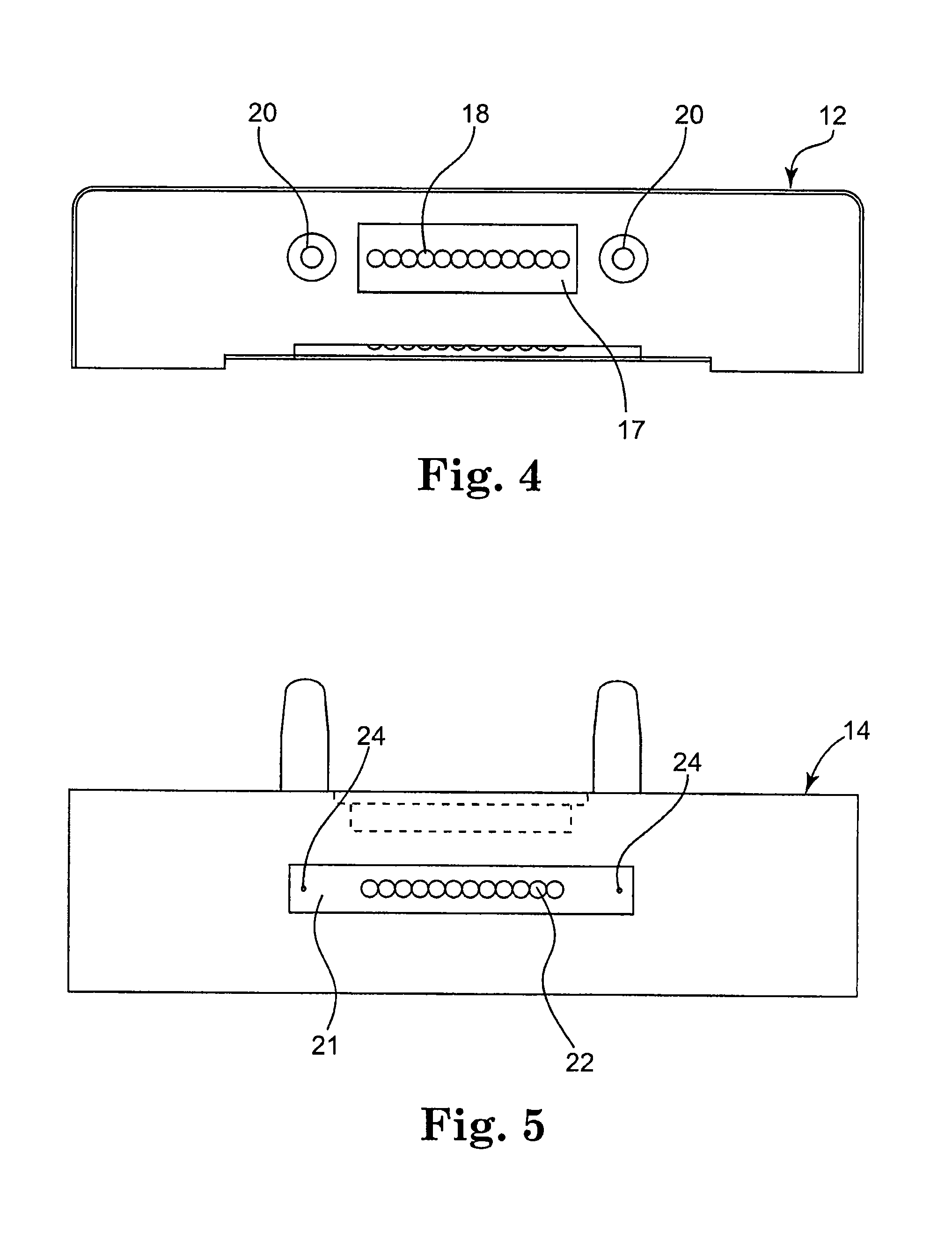Lens array with integrated folding mirror
a technology of folding mirrors and arrays, applied in optics, instruments, optical light guides, etc., can solve the problems of increasing optical and electrical signal losses, increasing bandwidth demand in fiber communication systems, and potential loss of optical components, so as to avoid long lead/cable length, facilitate connection, and reduce the effect of cable length
- Summary
- Abstract
- Description
- Claims
- Application Information
AI Technical Summary
Benefits of technology
Problems solved by technology
Method used
Image
Examples
Embodiment Construction
[0025]Referring now to FIGS. 1-3 there is shown a lens array 10 in accordance with the present invention. Lens array 10 is depicted as a substantially rectangular component, which includes a fiber side 12, a device side 14 and a back side 16. In addition, lens array 10 includes a top side 15 (as more specifically shown in FIG. 7). Those skilled in the art can appreciate that the size and shape of lens array 10 can be varied depending on the type of fiber optic connector and / or device to which it is coupled. In one embodiment of the present invention all non-critical surfaces of lens array 10 have a frosted or otherwise textured surface to facilitate adhesion of lens array 10 to other components in a fiber optic transceiver assembly.
[0026]Fiber side 12 is shown in greater detail in FIG. 4. Fiber side 12 has a connector receptacle 17 with a plurality of fiber side optical openings 18. FIG. 4 depicts a total of twelve fiber side optical openings 18; however those skilled in the art can...
PUM
 Login to View More
Login to View More Abstract
Description
Claims
Application Information
 Login to View More
Login to View More - R&D
- Intellectual Property
- Life Sciences
- Materials
- Tech Scout
- Unparalleled Data Quality
- Higher Quality Content
- 60% Fewer Hallucinations
Browse by: Latest US Patents, China's latest patents, Technical Efficacy Thesaurus, Application Domain, Technology Topic, Popular Technical Reports.
© 2025 PatSnap. All rights reserved.Legal|Privacy policy|Modern Slavery Act Transparency Statement|Sitemap|About US| Contact US: help@patsnap.com



